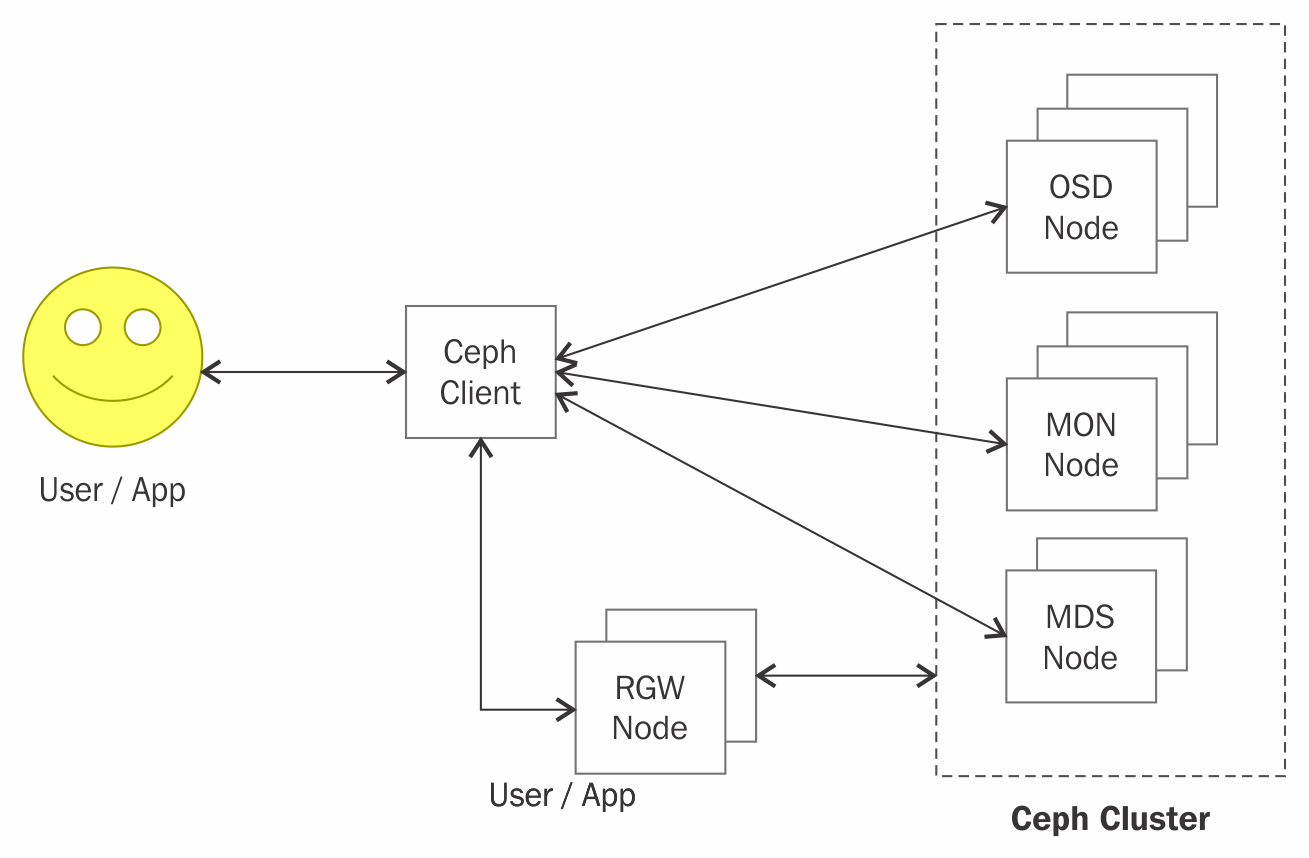Ceph authentication and authorization
In this recipe, we will cover the authentication and authorization mechanism used by Ceph. Users are either individuals or system actors such as applications, which use Ceph clients to interact with the Ceph storage cluster daemons. The following diagram illustrates this flow:

Ceph provides two authentication modes. They are as follows:
none: With this mode, any user can access the Ceph cluster without authentication. This mode is disabled by default. Cryptographic authentication, which includes encrypting and decrypting user keys, has some computational costs. You can disable the Ceph authentication if you are very sure that your network infrastructure is secure, the clients/Ceph cluster nodes have established trust, and you want to save some computation by disabling authentication. However, this is not recommended, and you might be at risk of a man-in-the-middle attack. Still, if you are interested in disabling the Ceph authentication, you can do it...






























































